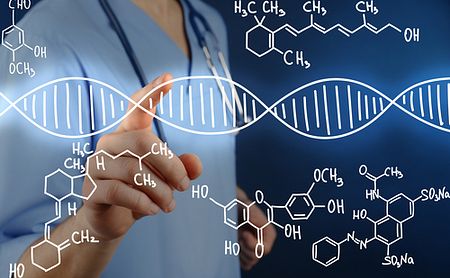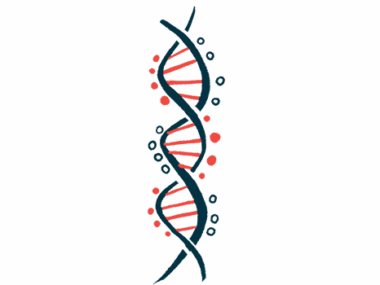Researchers With EDS May Have Found Causative hEDS Mutation
Written by |

Africa Studio/Shutterstock
Scientists finally may have discovered a gene mutation that associates with hypermobile Ehlers-Danlos syndrome (hEDS) — and their findings, eagerly awaited by the hEDS patient community, are expected to be written up within the next six months, they said.
While known mutations are linked with various EDS subtypes, hEDS cases have remained largely without an identified genetic cause.
Now, a team of researchers working with Russell A. “Chip” Norris, PhD, a professor in the department of regenerative medicine and cell biology at the Medical University of South Carolina, believe they have identified the gene mutation in play. They are now running tests to confirm their findings and are planning to write up their results within six months or less.
Uncommonly for research into rare disorders like hEDS, five of the people involved in the discovery — lead researcher Cortney Gensemer and four undergraduate summer interns — are EDS patients themselves.
“I think one of the coolest things is, when we publish, we’re going to have five people with the disease as authors on the paper,” Gensemer, a fourth-year doctoral student, said in a university press release.
“And it’s going to be a groundbreaking paper in terms of EDS research,” she said.
Gensemer, who has undergone numerous orthopedic and neurosurgeries as an EDS patient, started out in Norris’ lab working on cardiovascular research — what the professor had spent most of his career investigating.
“Studying my own disease wasn’t something I thought was feasible,” Gensemer said. “There was no one studying it, so that was not something I went to grad school thinking I would do.”
The idea to seriously hunt for a gene underlying hEDS grew out of a conversation between Gensemer and Norris, while Gensemer was still looking for a PhD advisor.
Part of Norris’ research focused on the genetics of cardiovascular diseases, including a condition called mitral valve prolapse. The mitral valve separates the heart’s upper and lower chambers — the atrium and ventricle — on its left side. During prolapse, the valve’s flaps fail to close properly with each heartbeat.
Gensemer piqued Norris’ curiosity by bringing to his attention that mitral valve prolapse is common among people with hEDS — and that no one knew which gene might be responsible for the disorder.
Although Norris encouraged Gensemer to pursue that question, both understood that their odds of success were low. Others before them had already invested time and money into the search, with no results to show for it.
“From a scientific perspective, it was probably a dumb decision,” Norris said. Nonetheless, they decided that the project was worth the risk.
The team had access to the complete set of protein-making gene portions — the exomes — of two distant relatives with hEDS. With that data, they were able to narrow their search to 10 candidate gene mutations from approximately 75,000 uncommon mutations shared between the two relatives. From those 10, they now believe they have discovered one that plays a role in hEDS.
The discovery could validate a physical cause for the little-known disorder, whose constellation of symptoms can often appear unrelated to each other. Indeed, its disparate symptoms can potentially delay a disease diagnosis for years.
“Everyone who has EDS is so hyper-focused on this gene because it’s tangible evidence of what we have,” said Sofia Luzbetak, a summer intern from the University of California San Diego.
“Because in many cases this can be an ‘invisible’ illness,” she said, “and you have a lot of doctors saying, ‘It’s in your head, theoretically you shouldn’t be in a lot of pain.’ So at least for me, I’m looking forward to having that proof.”
Despite a lack of effective treatment, early diagnosis remains critical as it enables patients to proactively manage their symptoms through lifestyle choices and physical therapy, including strengthening exercises.
Norris now has high hopes for what the next three to five years might bring, in terms of discoveries and possibly even treatments.
“By identifying a cause for the disease, we can now begin understanding the disease more thoroughly,” he said. “This will help us diagnose earlier and provide clues for treatments. We remain optimistic that our discoveries will provide continued hope for those with hEDS and a better quality of life with less surgeries and less pain.”
To obtain more patient samples to help further their research, the investigators also established an hEDS registry. Norris described being immediately inundated with sign-ups from the get-go.
“In one day, we had the largest registry for hEDS in the world,” he said.
Those interested in participating in the registry or seeking more information can send an email to [email protected].





